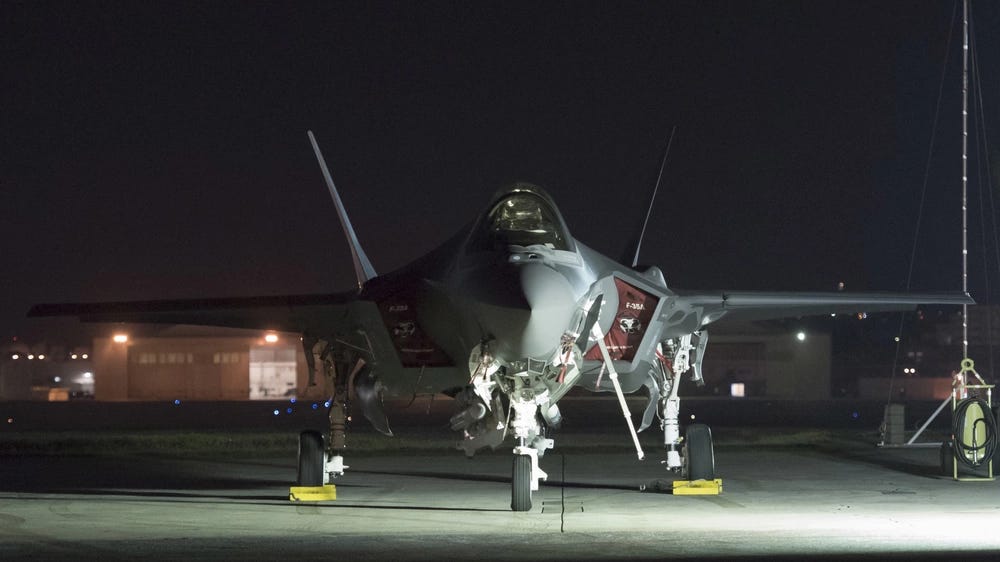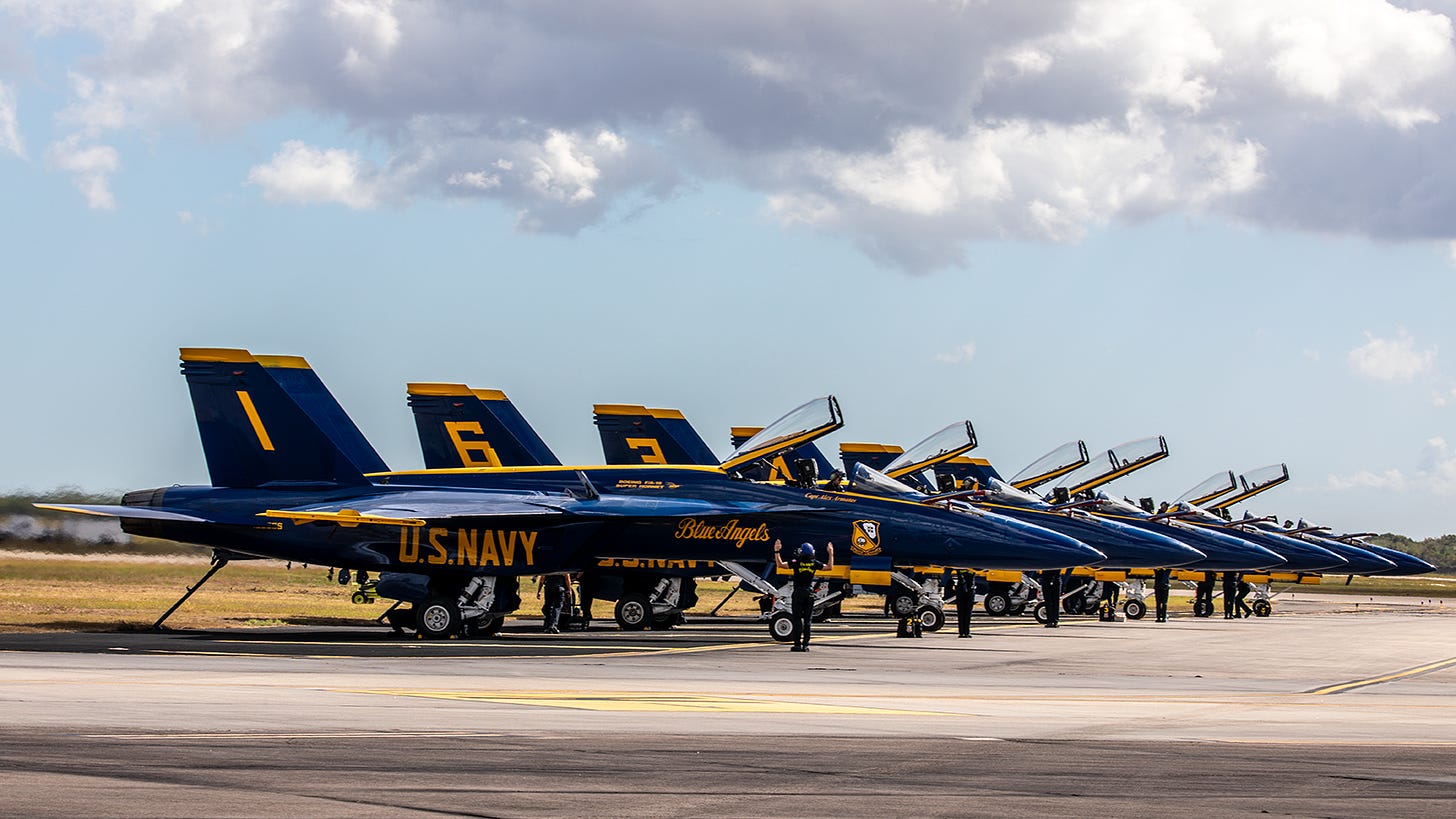F-35 upgrade delays and looking back on the B-10 Bomber
The Lightning's TR3 upgrade is delayed and the bomber that led to the B-17
"The F-35 is the most advanced, survivable and connected fighter aircraft in the world"
-Lockheed Martin
Mission Briefing:
F-35’s TR-3 Upgrade Faces Delays, Impacting Future Capabilities
The F-35 Lightning II, the most advanced stealth fighter in U.S. military history, is undergoing a major overhaul with the Technology Refresh 3 (TR-3) upgrade—but significant delays are pushing back its operational effectiveness. Originally planned for release in April 2023, TR-3 has faced setbacks due to software challenges, integration issues, and testing hurdles. Now, dedicated operational tests for TR-3 may not begin until mid-to-late fiscal year 2026, more than three years behind schedule.
What is TR-3 and Why Does It Matter?
TR-3 is a comprehensive hardware and software enhancement that boosts the F-35’s processing power, memory, and cockpit displays, laying the groundwork for future upgrades like the Block 4 modernization program. The upgrade includes:
Enhanced mission computers for faster data processing.
Improved cockpit displays providing pilots with clearer, more detailed situational awareness.
Upgraded software architecture to support future weapons and electronic warfare capabilities.
These improvements are crucial because TR-3 is a prerequisite for Block 4, which will expand the F-35’s weapons loadout, enhance target recognition, and improve electronic warfare systems. However, with TR-3 running behind schedule, Block 4 development is also slipping further into the future.
Delayed Testing and Combat Capability
Despite Lockheed Martin having delivered over 100 F-35s equipped with TR-3, these jets are currently restricted to training missions only. While the F-35 Joint Program Office (JPO) aims to have TR-3 combat-ready by 2025, there is growing concern that the timeline could stretch into 2026.
The delays stem from instability in the TR-3 software, which must be fully tested before operational evaluations can begin. The Pentagon initially refused to accept deliveries of TR-3-equipped F-35s until July 2024, when an interim version of the software was approved for non-combat flight operations. However, until full certification is achieved, these fighters remain non-operational for frontline missions.
Lt. Gen. Michael Schmidt, head of the F-35 program, remains optimistic, stating that aggressive test plans are in place to ensure TR-3 reaches full capability soon:
“We are aggressively implementing comprehensive test plans to ensure this critical upgrade delivers cutting-edge capabilities to the warfighter.”
What This Means for the Future of the F-35 Program
The TR-3 delays underscore broader concerns about software development within the F-35 program. The Office of the Director, Operational Test and Evaluation (DOT&E) has repeatedly criticized the program’s inability to meet schedules for software development and testing. In its latest annual report, DOT&E noted:
“The F-35 program has shown no improvement in meeting schedule and performance timelines for developing and testing software designed to address deficiencies and add new capabilities.”
With TR-3 lagging, Block 4 upgrades—including enhanced weapons compatibility, target recognition, and electronic warfare improvements—are also at risk of falling behind schedule. The cascading effect of these delays means the F-35’s full combat potential won’t be realized for years, impacting its effectiveness against near-peer adversaries like China and Russia.
Looking Ahead
While TR-3-equipped F-35s are already in service for training flights, their transition to full operational status remains uncertain. If the software stabilizes sooner than expected, testing could begin earlier, accelerating the process. However, if delays continue, the F-35’s ability to remain ahead of evolving threats could be compromised.
For now, the world’s most advanced fighter jet is still waiting for the upgrades that will allow it to dominate the battlespace of the future.
This Week in Aviation History
16 February 1932: The First Flight of the Martin XB-907
On this day in 1932, the Glenn L. Martin Company Model 123, designated XB-907 by the U.S. Army Air Corps, took to the skies for the first time. This streamlined, all-metal monoplane was a revolutionary leap in bomber design, introducing features that would become standard for decades. With retractable landing gear, an internal bomb bay, and a sleek mid-wing configuration, the XB-907 represented a dramatic departure from the biplane bombers of the era.
The aircraft was powered by two Wright Cyclone SR-1820-E radial engines, each producing 600 horsepower, and featured Townend rings to reduce drag and enhance cooling. Flown by a single pilot with two gunners stationed in open cockpits, the XB-907 made its way to Aberdeen Proving Grounds on 26 February 1932 for initial Army testing.
The Evolution into the Martin B-10
After undergoing modifications based on test results, the aircraft was redesignated XB-907A (Martin Model 139) and later became the XB-10. The upgraded design featured an expanded wingspan (70 feet, 7 inches), more powerful Wright R-1820-19 engines (675 hp each), and full NACA cowlings for improved aerodynamics.
Recognizing the aircraft’s potential, the Army placed an order for 48 production units, which became the Martin B-10—a bomber that set the standard for future designs. The B-10 was the first mass-produced all-metal monoplane bomber and the first to outperform contemporary fighter aircraft, a remarkable feat at the time. With a top speed of 213 mph, it was faster than the pursuit planes tasked with intercepting it.
Legacy of the B-10
The Martin B-10 revolutionized military aviation and influenced the design of bombers that followed, including the B-17 Flying Fortress. It introduced enclosed cockpits for the crew, an internal bomb bay for better aerodynamics, and rotating turrets for defensive gunnery—elements that became fundamental in later bomber designs.
While quickly overshadowed by advancements in aviation during the late 1930s, the B-10’s impact was undeniable. It was exported to multiple countries and saw action in the early stages of World War II.
The flight of the XB-907 was more than just a test of a new aircraft—it marked the dawn of a new era in bomber design, paving the way for the strategic air power that would define modern warfare.
In Case You Missed It
What we know about China’s J-36 so far:
Photo Outlet
Every issue of Hangar Flying with Tog gets you a free image that I’ve taken at airshows:
Feel free to use these photos however you like, if you choose to tag me, I am @pilotphotog on all social platforms. Thanks!
Post Flight Debrief
Want to keep getting this newsletter straight to your inbox? Just sign up using the form below—it's that easy! This newsletter will always be free for everyone, but if you’d like to support the mission and unlock even more, consider becoming a paid subscriber. Either way, I’m grateful for your support. Sign up now and stay in the loop!
-Tog







